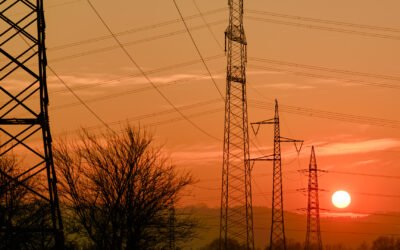• Economies across the globe, specifically advanced economies like the US, are rapidly deploying renewable energy and electric vehicles to meet the international commitments made under the Paris Agreement.
• Mature markets in terms of the deployment of demand response in the US include California, Texas, and Florida, whereas emerging markets include New York and Pennsylvania.
• The increase in the adoption of demand response programs was significantly driven by smart meter rollout plans by the state administration.
Economies across the globe, specifically advanced economies like the US, are rapidly deploying renewable energy and electric vehicles to meet the international commitments made under the Paris Agreement. To make a smooth transition to clean energy, demand response has a crucial role to play. Demand response is the ability of consumers to vary their electricity usage in response to price signals or grid requirements, providing much-needed flexibility and reliability to the overall power system. Different categories of consumers, including industrial, commercial, and residential, can participate in demand response programs and extract financial benefits against shifting and reducing their electricity demand during peak periods and emergencies. Currently, the market for demand response in the US is categorized into mature and emerging markets.

Figure 1: Top states in terms of installed demand response capacity (in GW)
Source: PTR Inc
Current Landscape of Demand Response in the US
Mature markets in terms of the deployment of demand response in the US include California, Texas, and Florida, whereas emerging markets include New York and Pennsylvania. Notably, the states with higher electricity usage are ideal candidates for introducing demand response programs.
Mature markets
The state of California is a market leader when it comes to rolling out demand response programs. California Independent System Operator, which is the state’s electric utility, is currently supervising a range of DR programs with a focus on increasing the deployment of DR. According to CAISO, California’s DR program has shown significant growth in recent years with over 5,000 MW of DR resources at their disposal.
Texas is also observing a steady increase in the DR capacity in recent years. As per the Electric Reliability Council of Texas (ERCOT), the DR capacity of Texas has almost doubled in a decade from 2000 MW in 2010 to 4000 MW in 2020. ERCOT supervises a demand response program that incentivizes consumers to reduce their energy usage during peak hours.
Other than reducing energy usage during peak hours, these states have also introduced DR programs that incentivize a reduction in the overall usage of electricity. Similarly, as per the Florida Public Service Commission (FPSC), the state has a DR capacity in excess of 1,800 MW, where the majority of the capacity comes from the participation of commercial and industrial consumers in the DR programs.
Emerging markets
Demand response capacity in New York and Pennsylvania has increased in recent years to the extent that these states are now categorized as emerging markets for demand response in the US. In New York, due to the state’s efforts aimed at improving energy efficiency and reducing greenhouse gas emissions, the demand response capacity has observed an increasing trend. The demand response capacity in New York has increased from 800 MW in 2010 to over 1700 MW in 2019, as per New York Independent System Operator (NYISO). The significant increase in the demand response capacity of the state is a direct consequence of the expansion of demand response programs, for instance, the ‘Demand Response Program for Large Customers’ and ‘Real-Time System-Wide Offer Cap’ program. These programs provided incentives to consumers to reduce energy usage during peak hours.
On the other hand, Pennsylvania has deployed considerable demand response capacity as well. The PJM interconnection that covers Pennsylvania, along with other states in the Mid-Atlantic and Midwest regions, operates a range of demand response programs. There are utility-sponsored programs as well, for instance, the Act 129 Demand Response Program, the Critical Peak Pricing Program, and the Smart A/C Saver Program.
Outlook of Demand Response in the US
The US is one of the leading countries persistently pursuing the statewide deployment of smart meters. Currently, in the US, 75% of households have smart metering technology, accounting for approximately 115 million smart meters across all states. The US is pushing to achieve 100% deployment of smart meters by 2030, and as per the estimates of PTR, they will be able to achieve their target well within time. 90% of the deployment of smart meters will be achieved as early as 2025.
Other than the federal government, the states and utilities have also shown keen interest in the deployment of smart meters. Utilities of California, Texas, and Florida are leading in terms of the installed base of smart meters, which account for around 32 million units of smart meters.
From 2021 onwards till 2030, around 17 million electricity customers are expected to enroll in the DR program all over the US. Furthermore, it is expected that states with the highest penetration of smart meters will have the highest enrollment. Out of 17 million electricity consumers, 14 million consumers will be enrolling in the DR programs from Florida, California, and Texas. Florida will account for 34% of the total enrollments, followed by Texas and California, which will account for 28% and 21% of the total AI-powered DR enrollments, respectively.

Figure 2: Projected smart meter deployment and AI-powered DR enrollments in millions.
Source: PTR Inc
Looking Ahead
As per the estimates of PTR, California, Texas, and Florida are leading markets in the US as far as the deployment of demand response is concerned. These states have become prime targets for demand response programs in the US because of their large population and high electricity usage. It is observed that the demand response programs are successful in reducing peak demand for electricity and preventing rolling blackouts in the states. The customers who participated in the demand response programs withdrew financial benefits as well from the utilities.
PTR observed that US states like Pennsylvania and New York have recently sprung up as emerging markets due to their demand response initiatives. The increase in the adoption of demand response programs was significantly driven by smart meter rollout plans by the state administration, and it is expected that the participants in the demand response programs will grow in the future.
AI in Power Grid Service Overview
The research presented in this article is from PTR's AI in Power Grid service. For information about this service please submit a request shown below.
Contact Sales:
Europe
+49-89-12250950
Americas
+1 408-604-0522
Japan
+81-80-7808-1378
GCC/Rest of APAC
+971-58-1602441
More about our:
AI in Power Grid Market Research
Recent Insights
US Elections: Consequences of a Second Trump Presidency for Energy Sector
The US is making strides to move away from fossil fuels and eventually decarbonize the energy sector. The White House aims to achieve 80% renewable...
US and EU Strategies in Smart Buildings
Download Service Overview The EU and USA aim to decarbonize their building sectors to meet emission reduction targets. Initiatives like the Home...
COP through the Ages
This infographic takes a cursory glance at the most significant achievements of the Conference of Parties through the years and offers a chance for...


